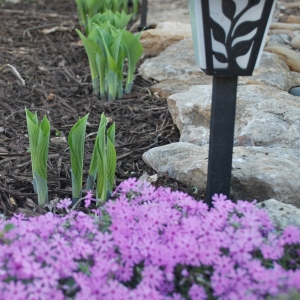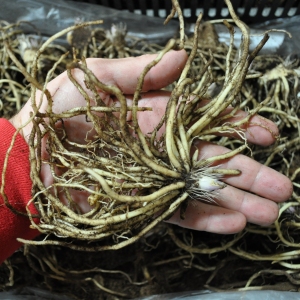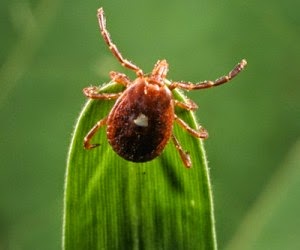"The Japanese beetle is here to stay. Therefore, we must learn to "live with" or manage this insect pest while attempting to minimize its impacts." -United States Department of Agriculture
News of the Japanese beetle invasion has been wide spread. Almost every neighborhood in athe mid-west has seen some type of damage from these ravenous invaders leaving behind the skeletal remains of your favorite shrub, tree, or vegetable in the garden.
Both as adults and as grubs, Japanese beetles are destructive plant pests. Adults feed on plant foliage, mate and lay eggs in mid summer. The carnage continues when the next generation hatch in late summer. Japanese beetle larvae along with their many white grub cousins feed on turf grass roots from August through October. If you ever thought the Japanese beetles were devastating to your garden, wait till their grubs attack your turf.
Grubs are the larval stage of several large beetles – June Bugs, May beetle, Masked Chafer and their iridescent cousin, the Japanese beetle. Young grubs feed on turf grass roots and will kill large sections in a short amount of time.
The first line of defense in preventing turf damage is to apply Grass Pad Long Lasting Grub Controlto your lawn, in mid-June to July. GPLLGC, when applied and watered in thoroughly will be absorbed and attaches to the grass roots. As grubs feed, GPLLGC is ingested and stops grubs from feeding.
Grub damage in the lawn occurs from August through October. Identification of grub damage can be tricky, as it happens when drought or disease may also stress the lawn. The best way to check for grub damage is to grab a handful of the affected turf and gently tug. The grass will peel back like a carpet, exposing the grubs that have eaten the roots.
If grub damage is found, apply Grass Pad Quick Kill for grubs as soon as possible. GPQK, when applied as directed, will kill grubs and stop further damage in 24 hours. Sunlight can degrade the fast acting components of GPQK and should be watered in immediately after application using 1/2 to 1 inch of water. Adequate watering is necessary for GPLLGC and GPQK to penetrate the thatch layer and get deep into the soil.
Repairing grub damage is simple. Repairs can begin immediately with spot seeding and an application of Loveland Lawn Renovatorturf food along with an aggressive watering regime to help reduce the amount of damage that has occurred. Fall over-seeding at the heaviest rate will be necessary to complete the repair process.
See Related: Fall Lawn Renovation
News of the Japanese beetle invasion has been wide spread. Almost every neighborhood in athe mid-west has seen some type of damage from these ravenous invaders leaving behind the skeletal remains of your favorite shrub, tree, or vegetable in the garden.
Both as adults and as grubs, Japanese beetles are destructive plant pests. Adults feed on plant foliage, mate and lay eggs in mid summer. The carnage continues when the next generation hatch in late summer. Japanese beetle larvae along with their many white grub cousins feed on turf grass roots from August through October. If you ever thought the Japanese beetles were devastating to your garden, wait till their grubs attack your turf.
Grubs are the larval stage of several large beetles – June Bugs, May beetle, Masked Chafer and their iridescent cousin, the Japanese beetle. Young grubs feed on turf grass roots and will kill large sections in a short amount of time.
The first line of defense in preventing turf damage is to apply Grass Pad Long Lasting Grub Controlto your lawn, in mid-June to July. GPLLGC, when applied and watered in thoroughly will be absorbed and attaches to the grass roots. As grubs feed, GPLLGC is ingested and stops grubs from feeding.
Grub damage in the lawn occurs from August through October. Identification of grub damage can be tricky, as it happens when drought or disease may also stress the lawn. The best way to check for grub damage is to grab a handful of the affected turf and gently tug. The grass will peel back like a carpet, exposing the grubs that have eaten the roots.
If grub damage is found, apply Grass Pad Quick Kill for grubs as soon as possible. GPQK, when applied as directed, will kill grubs and stop further damage in 24 hours. Sunlight can degrade the fast acting components of GPQK and should be watered in immediately after application using 1/2 to 1 inch of water. Adequate watering is necessary for GPLLGC and GPQK to penetrate the thatch layer and get deep into the soil.
Repairing grub damage is simple. Repairs can begin immediately with spot seeding and an application of Loveland Lawn Renovatorturf food along with an aggressive watering regime to help reduce the amount of damage that has occurred. Fall over-seeding at the heaviest rate will be necessary to complete the repair process.
See Related: Fall Lawn Renovation






























































